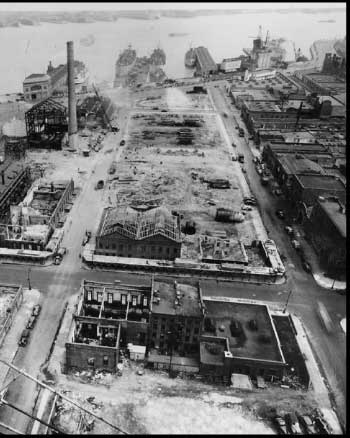

The Great Depression exacerbated the situation, and increasing numbers of commercial along First Avenue were demolished. New buildings for Bellevue Hospital and several gas stations were constructed.
By the 1930s, much of the East Side of Manhattan, including Rose Hill and Kips Bay had become depressed and even more decayed like than in previous decades. The famous WPA Guide to New York City described the area as "a drab extension of the Lower East Side....a welter of depressing tenements and small stores that follow the shore" of the East River. The industries and power plants located in the area made it "...a riverside back yard for the more imposing midtown section west of it. Huge industrial enterprises breweries, laundries, abattoirs, power plants along the water front face squalid tenements....The numerous plants shower this district with the heaviest sootfall in the city 150 tons to the square mile annually."
This was, after all, the Gashouse District, with the large gas plant looming over it at 22nd Street. Steam and electrical plants also stood at 14th, 35th and 38th Streets.
The novelist Thomas Wolfe wrote of the Gashouse District during this period, where he found:
"...powerful ugliness and devastation...with its wasteland rusts and rubbish, slumlike streets of rickety tenement and shabby brick, its vast raw thrust of tank, glazed glass and factory building...lifted by a powerful rude exultancy of light and sky and sweep and water such is found only in America."